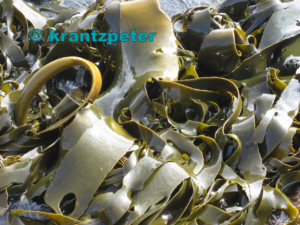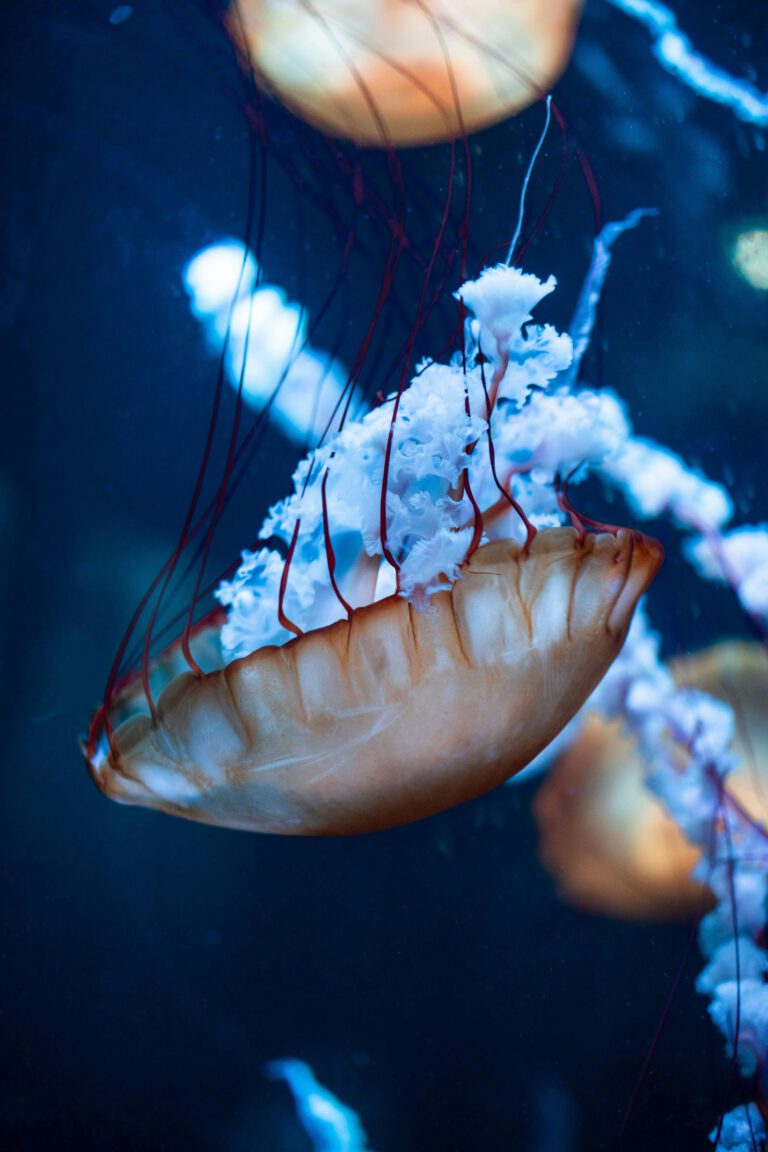Sugar Kelp – Saccharina latissima

Sugar Kelp (Saccharina latissima) - Suikerkelp
- Taxonomy: Sugar Kelp belongs to the Saccharinaceae family. It is a brown algae commonly found in coastal waters.
- Species: This kelp can grow up to 2 meters long. It has broad, flat blades that are often used in cooking.
- Habitat: It thrives in cold. Nutrient-rich waters. It grows attached to rocky substrates in shallow waters.
- Diet: As a producer. It uses photosynthesis to create energy. It absorbs nutrients from the water.
- Ecological Role: This kelp provides food and habitat for various marine species. It supports biodiversity in coastal ecosystems.
- Harvesting: Sustainable harvesting practices are essential. It is used in food products and cosmetics.
- Unique Features: Having a sweet taste. It contains high levels of vitamins and minerals.
- Culinary Uses: It is popular in Asian cuisine. Sugar Kelp is often used in soups, salads and as a seasoning.
- Health Benefits: Rich in antioxidants. It may boost immunity and promote gut health.
Sugar Kelp: A Vital Component of Coastal Ecosystems
When we think of marine life. Vibrant fish and colorful coral reefs often come to mind. Yet, the ocean also holds essential plants like Sugar Kelp. This remarkable algae plays a vital role in our ecosystems and is frequently overlooked.
What is Sugar Kelp?
Scientifically known as Saccharina latissima. It is a large brown algae found along the coasts of Europe and North America. It thrives in cold waters, growing attached to rocky surfaces. Its broad, flat blades can reach impressive lengths of up to 2 meters. This plant not only enriches marine biodiversity but also provides various culinary benefits.

Life Cycle and Growth
Growing rapidly! Especially in nutrient-rich waters. It absorbs sunlight to perform photosynthesis. Which allows it to thrive in its habitat. This algae is often found in underwater forests. Creating a beautiful green landscape beneath the waves.
Culinary Applications
It is not just a beautiful marine plant. It is widely used in cooking. Not only that, but it adds a unique flavor to dishes. Many chefs appreciate its versatility. You can find Sugar Kelp in soups, salads and even as a seasoning. Its naturally sweet taste enhances various recipes.
Health Benefits of Sugar Kelp
This kelp is not only delicious but also nutritious. It is packed with vitamins and minerals. Rich in antioxidants, it may help boost the immune system. Incorporating Sugar Kelp into your diet can promote overall health. Its high fiber content aids in digestion. Making it a beneficial addition to meals.
Conservation and Sustainability
While it is abundant. Sustainable harvesting is crucial. Overharvesting can lead to habitat loss. It is essential to follow guidelines to ensure this valuable resource remains available. Sustainable practices benefit both the kelp and the marine life that depends on it.
Conclusion
Sugar Kelp is a remarkable and essential component of marine ecosystems. Its role as a food source and habitat is vital. By understanding and appreciating Sugar Kelp. We can support its conservation. Next time you enjoy a meal featuring this delicious algae. Remember the important role it plays in our oceans.






